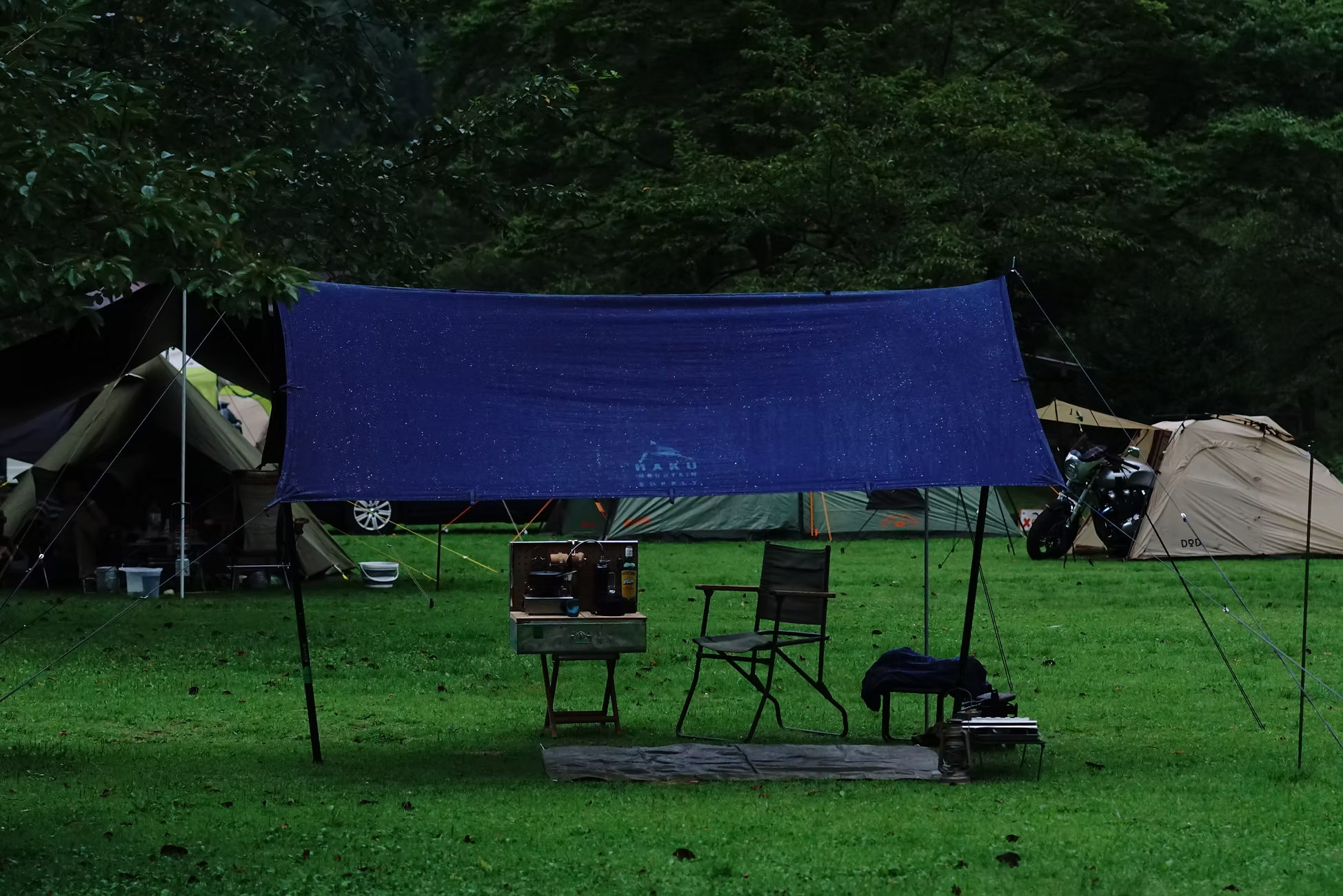As we prepare for the launch of Tokyo Crafts line of Japanese camping products in the US for the first time, we're digging in to the design studies of some of their product line. View the full series here.
An All-Around Shelter
The Wingfort is designed to adapt to changing seasons, shifting weather, and a wide range of camp environments. Its strength lies not only in versatility but also in the attention paid to usability, comfort, and structural design.

Development Background
Tunnel-style two-room shelters are popular because their front panels can flip up and function like a tarp. But once those panels are lifted, fully closing them again becomes cumbersome. Adding a separate flysheet increases protection, yet makes setup more complicated than most campers want.
Our goal was clear: create a large shelter that set up with the ease of a single-layer dome, while still offering the protection and flexibility of a two-room design.
From the First Sample
Early prototypes went through repeated revisions—adjustments to pole and fabric thickness, ventilation layout, and even the addition of small zippers. Each iteration pushed the Wingfort closer to its final shape.

The Double-Layer Structure


The Wingfort’s defining feature is its unique dual-panel system. By running the poles between the outer and main panels, the outer sheet can be opened or closed independently. This allows the shelter to be sealed against weather, partially opened for ventilation, or arranged like a tarp without ever leaving gaps for rain.

Attention to Detail
Initial concepts placed the outer panel on only one side, but testing showed the importance of having it on both. With panels on each side, the shelter offers both privacy and breathability while giving campers a wide range of setup options.

Seams and joins were reinforced to prevent water entry, even where fabric is sewn directly to the body.

Durability and Function
A large tent only works if it can be trusted in rough weather. Wind resistance was a key focus through every stage of development, with refinements to pole layout and panel integration ensuring that form never compromised function. The result is a structure that balances clean design with stability in real conditions.

Everyday Use
Three main panels—front, back, and side—can be operated from inside the shelter. They can be fully opened, closed, or set to mesh, depending on privacy or ventilation needs. When everything is opened to mesh, the interior stays breathable while keeping insects out. When closed, the Wingfort provides privacy and protection for families or groups.
The Form We Arrived At
The Wingfort uses a double-layer structure that allows every window to be closed without lowering the panels. Campers no longer need to reset the canopy before going to sleep, and ventilation is still maintained through the concealed outer panel.

With the inner tent installed, the Wingfort provides a dedicated living space for four people. Without the inner tent, the interior converts into an open shelter suitable for group use or gatherings of up to ten people.

This structure is the result of extensive prototyping and refinement, balancing usability, weather resistance, and interior comfort. The Wingfort brings together functionality, space, and a distinctive form designed for modern camping needs.




